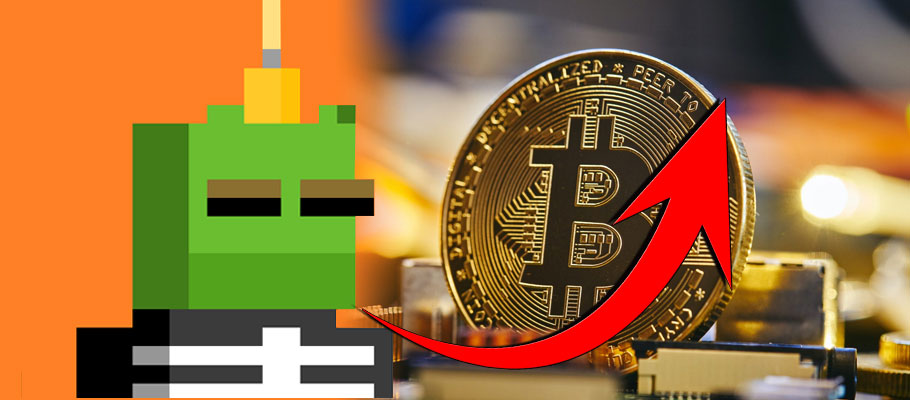
Published: December 20th, 2023
The average cost of sending Bitcoin has reached the highest in over two and a half years, and fees continue to soar.
New data from Bitinfocharts tracks the average cost of a Bitcoin at USD 37.55. The last time it reached those heights was in My of 2021. Fees have been on an upward trajectory since April of 2023, when demand for Bitcoin Ordinals began to heat up.
Ordinals are Bitcoin’s answer to Ethereum NFTs (non-fungible tokens). They are digital assets, typically images or other works of art, stored on the Bitcoin blockchain.
Rising interest means more Ordinals are being minted. In the past, the blockspace they consume would have been available for processing non-image BTC transactions. That gives the Bitcoin miners who confirm transactions a harder job to do. The result is higher transaction fees for anyone sending or receiving BTC.
Crypto users have taken to social media to complain about the rising costs. Some have reported cancelling transactions after realising the fee would have consumed 40 per cent or more of the amount of BTC they wanted to send.
Not surprisingly, the spike in Ordinals interest has divided Bitcoin users. Many believe the blockchain should be reserved for Bitcoin’s original use case, making private one-to-one payments outside the confines of traditional finance.
Bitcoin fees reached their all-time-high in April 2021, when the average cost of a BTC transaction was USD 62.67. Bitcoin was at the peak of a bull run, raising activity on the blockchain.
Interest in Bitcoin Ordinals last surged in July 2023 when inscriptions hit a new all-time high—though transaction fees on the Bitcoin blockchain were unaffected.
Data from blockchain analytics firm Dune showed that the Bitcoin network had chalked-up the second-busiest day in Ordinals history on 9th July with 385,910 inscriptions. That figure was just below the all-time-high reached on 6th May 2023, when more than 400,000 new inscriptions were recorded.
Despite the deluge, Dune’s data said Bitcoin transaction fees were largely unaffected. On the busiest day for inscription activity, BTC fees were just 1.052 USD.
With inscriptions rising on a parabolic curve, Dune analysts were surprised by the stability in fee levels. Users hadn’t paid more than 2.4 USD a day during the month of July, and the network hadn’t seen a daily fee count surpass 6 USD since early June.
Ordinal Inscriptions are similar to more established Ethereum NFTs but tailored to the needs of the Bitcoin blockchain. They're ‘inscribed’ on a Satoshi, the lowest BTC denomination by writing data oonto the witness of a Bitcoin transaction, an element introduced in 2017’s SegWit network upgrade.
Dune said the most popular type of Inscription at the time was textual content, accounting for more than 13 million inscriptions or 81 per cent of the total inscribed to date.
This near all-time high was likely sparked by the rapid growth in Ordinal-related projects and the buzz they generate on crypto twitter and other forums.
In February 2023, Ethereum experienced the exact opposite effect on its ‘gas’ transaction fees when they rose sharply after a spike in NFT trading activity.
Figures from Glassnode showed that the median cost of a ‘gas fee’ (Ethereum's label for the transaction fees it charges to keep network congestion in line) climbed steadily to between 10-20 gwei over the previous nine months.
In February 2023 the figure rose sharply to 37 gwei, an increase that was even higher than peaks which occurred in the aftermath of big events like the FTX collapse in November 2022 and Binance’s difficult week in December 2022. In those periods Gas fees reached 36 gwei and 24 gwei respectively.
‘Since gas fee demand (rose) in smaller steps for most of February, it seems that we are seeing the first indicators that Ethereum network activity is returning to normal,’ wrote Glassnode analysts.
Gas fees ebb and flow in line with network demand, a bit like the surge pricing used by apps like Uber. For crypto traders it means that transaction costs go up when more transactions are attempted to be added to a new Ethereum block. In February 2023, rising user activity looked to be driven by traders taking place on Ethereum’s NFT market.
The gas fees for new Ethereum NFT transactions jumped by 96 per cent for two months in a row, Glassnode said, touching levels last reached at the peak periods achieved during the 2021-2022 NFT frenzy. Much of that trading happened on the emergent Blur marketplace, which surpassed OpenSea, the previous leader, in overall NFT trading volume in January of this year.
‘The arrival of Blur and its surging popularity has increased demand for Ethereum block space, leading to higher fees for validators and more ETH being burnt,’ added Glassnode.
An NFT is a token on the blockchain that provides digital proof that someone owns an asset, often a digital item like a unique avatar or video game element. In some cases, the NFT denotes proof of ownership over a physical / real world artwork or collectible. The NFT market hit USD 25 billion in trading volume in December 2022, growing from roughly USD 5 billion in January 2022.
Other reasons for the February 2202 rise in Ethereum NFT activity would factor in the launch of new collections by well-known NFT brands like Yuga Labs, which released its Dookey Dash game that month, alongside the latest version of its popular Doodles collection.
In Glassnode’s analysis, Ethereum’s network adoption rate in Q1 2023 was comparatively low despite the NFT trading uptick. The number of new addresses created was 40 per cent beneath the 2022 peak. February’s rise in NFT activity was largely driven by existing NFT holders and didn’t point to a rise in NFT market liquidity.